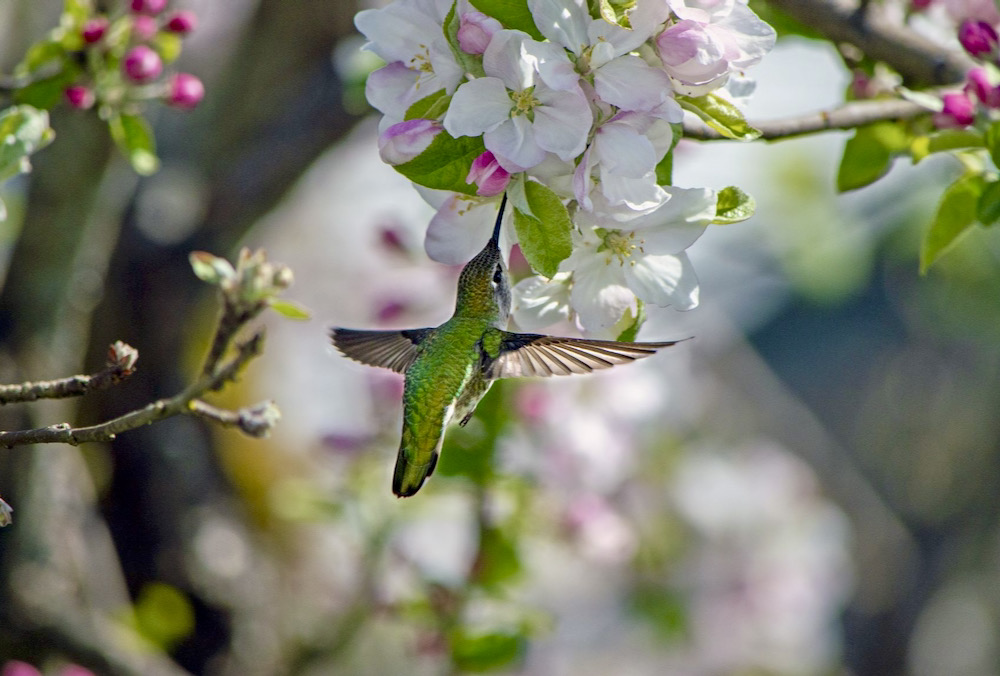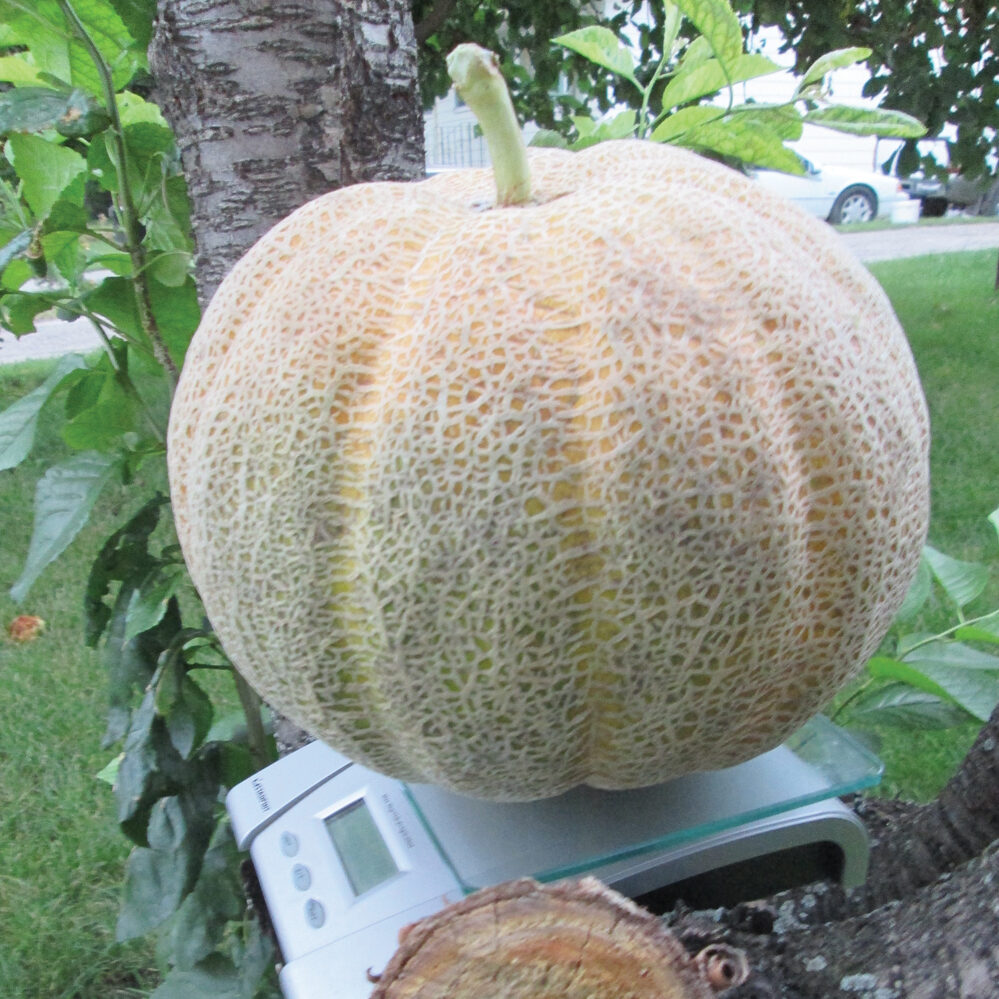Some who haven’t heard me sing have asked: Do you really write and sing your own songs? My answer is — Absolutely! My latest one commemorates Canada’s 150th birthday. I call it: “That’s Who We Are.”
This page includes an Alberta reader’s experience with water dowsing; a subject I covered several times in past Grainews issues.
Did you note the date of this Grainews issue? It’s Tuesday, April 11, 2017. What’s so special about said date? It’s right at the point of the full moon. Also, April 9, 10, 11, 12 and 13 are five of the very best fruitful spring days for seeding and/or transplanting tomatoes, peppers, annuals, perennials, herbs or what have you for good growth and sturdiness.
Read Also

Odes to purple potatoes and to horticultural hearts
What’s it going to be this Valentine’s Day? Red roses, a box of chocolates and a corsage along with a…
The three days of April 11, 12 and 13 are also ideal for working with the moon’s energy for planting gooseberry, grape and strawberry plants plus rose bushes outdoors, along with ornamentals and fruit-bearing trees, shrubs, perennials and vines such as honeysuckle, hops and clematis. To help promote strong tree roots, stir in a small handful of Epsom salt or whole oat grains into the bottom of each planting hole.
Top all this off with the Canadian Shield rose, released by the Vineland Research and Innovation Centre to coincide with Canada’s 150th anniversary this year.
Hey! I haven’t tipped my hat yet and bid you welcome, so let me do that right now!
Water dowsing
This is the fourth and final mini story from a letter by mail sent from a reader in Alberta. “Our well was old, wooden casing, hand dug. We got a dowser. He came with a handleless shovel against his stomach, blade pointing away. When he found the stream, the shovel motioned up and down. He counted the beats, said water about 200 feet. It was right under a power line. Another dowser came using a forked branch. He saw the look on my face sort of unbelieving, I guess. He took my hand — the other was to hold the forked branch. When we crossed the stream, the same one, the stick began to turn in my hand so powerful, I could not hold it. It pointed down. I wish I could tell you we drilled a well and got lots of water, but no — a big power line was being planted in our pasture, a four-foot auger made holes to set the legs in. We watched it working probably going down eight feet. When the hole was drilled I looked in, about four feet down was water. That would make a good well, I said. The power company men asked if we needed a well — answered yes. Got a culvert — power company drilled the hole 16 feet, dropped the culvert in. Husband punched holes, lots of water but not good quality.”
Brief notes from Ted: That concludes the writer’s letter who asks her name not be printed. When it comes to water dowsing, either you have the gift or you don’t. About one person in 10 possesses it. Often, some among the other nine who don’t, are quick to conclude that the one who has the gift is a fake. Experience also seems to tell us the power is inherited by son from mother and passed on from father to daughter.
March 8, 2017 email
“Hi Ted: In a January 23, 2012 Grainews article I read about (business name withheld) but cannot get in touch with them using either phone number or email address. I am looking for some Russian 117 seed, Red Belly and Regina Yellow seed. Do you have any idea of where I could get these seeds? Thanks for your help. We are located in central Alberta close to Red Deer. (Signed) Harold Huising. Sent from my iPad”
Note from Ted: The firm Harold is asking about is no longer in business. Here are some alternate suggestions to his inquiry. The two following named seed outlets are good sources for heritage, historical and heirloom open-pollinated tomato varieties.
Heritage Harvest Seed
Phone 204-745-6489
www.heritageharvestseed.com
Check out their website for dozens of hard-to-find tomato varieties, many veggies, herbs and flowers. Among substantial listings are Russian 117, Russian Big Roma and Russian Prince. The latter-named variety “produces beautiful one- to two-pound pink tomatoes with great taste on vigorous vines. In Prince George, B.C. these tomatoes are grown in the greenhouse because of their short season.” As for Russian 117, here are just a few of its attracting qualities. Huge heart-shaped flat-bottom fruits are very dense and meaty with all-purpose uses from sauces to stewing and fresh eating.
Another seed source not to be overlooked is:
Prairie Garden Seeds
Phone 306-682-1475
Email [email protected].
Jim Ternier and his daughter Rachelle Ternier garden without agricultural chemicals and have encouraged home gardening and seed saving since 1986. Their catalogue of open-pollinated, untreated and non-GE veggie seeds is vast.
As for tomatoes, I’ll name a few. Early Alberta has its origins by way of a Mr. Fruno of Edmonton in 1941, which came about from a cross between Golden Bison and Bounty. If you’re looking for long-keeper storage tomatoes, you’ll be interested in the following: “The first two varieties have very firm, medium-size fruits that keep well into the winter and were bred by Tim Peters Seed & Research. Ruby Treasure has scarlet-red fruits, some of which may ripen. Winter Gold is picked green and ripens yellow over the next few months. Plants are very compact. Clare’s tomato is similar to one out there called “Mystery Keeper” an excellent storage tomato. Plants have dense foliage hiding incredible fruit production of this variety. When cut open, insides are quite red in colour, compared to the outside which is often a lighter pink/yellow/cream colour. Keeps for months!”
Canadian Shield Rose
This is a must-have rose for gardeners to celebrate our nation’s 150th birthday. What a beauty! It’s tough, dependable and hardy in Zone 3. Ask for Canadian Shield at your local/regional nursery or garden centre. Rosarians will be happy to know its foliage is resistant to black spot and powdery mildew. Corn Hill Nursery at Corn Hill, N.B., and Jeffries Nurseries at Portage la Prairie, Man., each agree that Canadian Shield is the triumphant result of decades of work by many Canadian breeders. It produces stunning deep-red double roses with glossy reddish-green foliage that shows virtually no disease damage, even late into the year. At maturity it reaches a height of 1.25 metres (four to five feet), so give it some space to achieve maximum potential.

Early-bird planting
Depending on weather and where you’re located, April is the month many gardeners begin picking rhubarb stalks, cutting asparagus spears and seeding carrots, parsnips, parsley, peas, radishes and leafy greens outdoors. May might be considered the reward month and one of the most pleasant times in the garden after enduring March’s snow and wind. If you’re planting potatoes this month, April 21, 22 and 23 are especially good for root crops growth. Next month the best days for planting spuds are May 19, 20, 23 and 24, 2017.
















